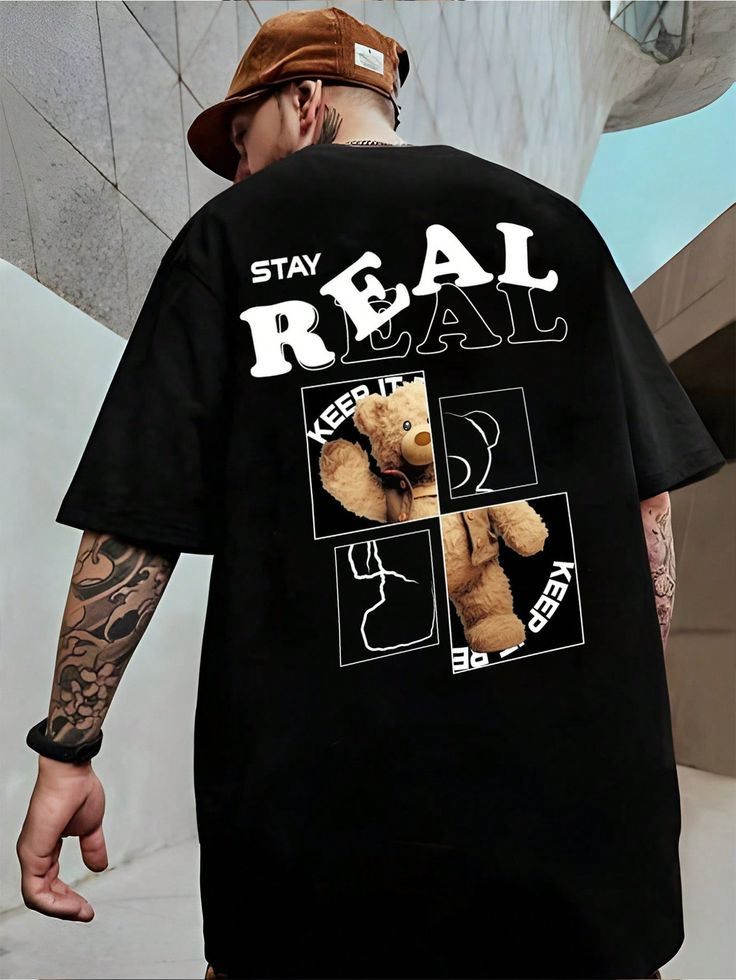Currently Empty: $0.00

Introduction
The T-shirt, once a humble undergarment, has become one of the most iconic and versatile garments in modern fashion. It is worn by people from all walks of life, in various settings, and for countless purposes. Over the years, the T-shirt has evolved from a basic piece of clothing to a powerful symbol of identity, culture, and self-expression. Whether it’s a blank canvas waiting for a graphic design, a promotional item, or a statement piece reflecting one’s personal beliefs, T-shirts have transcended their utilitarian origins to become a symbol of individuality. This article explores the history, evolution, and significance of the T-shirt in both fashion and culture, delving into its transformative journey through the decades.
History of the T-Shirt
The history of the T-shirt dates back to the late 19th century, when it was initially designed as an undergarment. In the early 1900s, the T-shirt was introduced as part of the standard military uniform, intended to be worn under a soldier’s uniform. Its initial use as an undergarment made it a simple, functional garment, designed for comfort and breathability. However, it wasn’t until the 1940s that the T-shirt began to take on a more visible role in fashion.
In the post-WWII era, the T-shirt became a symbol of youthful rebellion and independence. Hollywood icons like Marlon Brando and James Dean wore T-shirts in their films, cementing the garment as a symbol of coolness and youthful defiance. Brando’s portrayal in A Streetcar Named Desire (1951) and Dean’s role in Rebel Without a Cause (1955) both featured the T-shirt as a central piece of their wardrobes, forever linking the garment with the image of the brooding, rebellious teenager. This was the beginning of the T-shirt’s rise as an essential part of mainstream fashion.
By the 1960s and 1970s, T-shirts began to gain cultural significance. They were worn as a way to express political beliefs, show support for social movements, and display allegiance to favorite bands or causes. The counterculture movements of the 1960s, including the Civil Rights Movement and anti-Vietnam War protests, saw T-shirts become a medium for expressing dissent and solidarity. The T-shirt was no longer just a piece of clothing; it had become a tool for communication.
The Evolution of T-Shirt Styles
The T-shirt has come a long way from its humble beginnings, with a wide array of styles, cuts, and designs available today. Early T-shirts were simple and plain, typically in white or gray, and had short sleeves and a crew neck. Over the years, these basic styles have evolved to accommodate different tastes and trends.
One of the most significant changes to T-shirt design is the variety of cuts and styles that have emerged. While the classic short-sleeve, crew-neck design is still a staple, other variations such as V-necks, long sleeves, and even sleeveless T-shirts have become popular. Each style caters to different body types, fashion preferences, and practical needs. For instance, V-neck T-shirts are often considered more fashionable or formal, while crew-neck T-shirts maintain a timeless, casual appeal.
In addition to cut and style variations, the use of graphics and slogans on T-shirts has become a major part of their evolution. Graphic tees, which feature printed images, logos, or designs, became particularly popular in the 1960s and 1970s, when bands like The Beatles and The Rolling Stones began selling T-shirts with their logos and album covers. T-shirts with political messages or slogans also emerged during this period, serving as a form of activism and protest. Over time, the T-shirt became a canvas for artists and designers, who experimented with different printing techniques and visual aesthetics.
The materials used in T-shirt production have also evolved significantly. While early T-shirts were made primarily from cotton, modern T-shirts are often made from blends of cotton, polyester, and other synthetic fibers. These blends offer different benefits, such as increased durability, moisture-wicking properties, or stretch. Additionally, the rise of eco-conscious fashion has led to a demand for T-shirts made from organic cotton, recycled fabrics, and other sustainable materials.
T-Shirts in Popular Culture
T-shirts have always been deeply intertwined with popular culture, reflecting trends, movements, and the attitudes of the time. The cultural significance of T-shirts can be seen in their widespread use in music, movies, and art.
In the music world, band T-shirts have long been a way for fans to show their support and allegiance. Whether it’s a shirt featuring the logo of iconic bands like Nirvana or The Ramones, or a limited-edition design created for a particular concert or tour, band T-shirts have become symbols of cultural identity. They not only represent a fan’s love for a band but also serve as a way to connect with like-minded individuals who share the same musical tastes.
Similarly, T-shirts have played an essential role in the film and television industries. Movie quotes, famous images, and references to popular TV shows have all made their way onto T-shirts, allowing fans to wear their favorite pop culture references with pride. From Star Wars to Marvel superheroes, T-shirts have become a means of engaging with and celebrating the media we consume.
Beyond entertainment, T-shirts have also served as powerful tools for social activism. During times of political unrest or social change, T-shirts have been used to express solidarity with various causes. In the 1980s, for example, T-shirts with messages related to the AIDS epidemic raised awareness about the crisis and promoted safe sex. More recently, T-shirts have been used in protests against police brutality, such as the “Black Lives Matter” movement, as well as in advocacy for climate change and other environmental causes.
T-Shirt Trends and Fashion Industry Impact
While T-shirts were once viewed as casual, everyday clothing, they have increasingly made their way into the high fashion world. Designers and luxury brands have embraced T-shirts as a core part of their collections, elevating the humble garment to new heights. Luxury fashion houses like Balenciaga, Louis Vuitton, and Gucci have incorporated graphic T-shirts into their runway shows, often using bold logos or artistic designs to make a statement.
These high-end T-shirts are typically made from high-quality materials and crafted with attention to detail, allowing them to stand out in the luxury market. Their inclusion in designer collections has played a significant role in making the T-shirt a fashion statement, rather than just a basic piece of clothing.
At the same time, fast fashion has had a significant impact on the T-shirt industry. Brands like Zara, H&M, and Forever 21 have popularized affordable, mass-produced T-shirts that are constantly updated with the latest trends. While this has made T-shirts more accessible to people all over the world, it has also led to concerns about overconsumption, waste, and the environmental impact of fast fashion.
T-Shirt Printing Techniques
One of the key factors in the evolution of T-shirts has been the development of various printing techniques. Screen printing, which involves pressing ink through a mesh screen onto the fabric, has been the traditional method for producing T-shirt designs. This method allows for bold, high-quality prints and is still widely used today for both large and small production runs.
In more recent years, digital printing has emerged as an alternative to screen printing. This method allows for more intricate, detailed designs to be printed directly onto the fabric using inkjet technology. Digital printing has made it easier for individuals and small businesses to create custom-designed T-shirts with minimal upfront costs, leading to a rise in personalized fashion.
Other printing techniques, such as heat transfer printing and sublimation printing, have also gained popularity. Heat transfer printing involves applying a design to the fabric using heat and pressure, while sublimation printing allows for full-color designs to be transferred onto polyester fabrics.
Sustainable and Ethical T-Shirt Production
As environmental and ethical concerns grow, many consumers are turning to sustainable and ethically produced T-shirts. The fashion industry is one of the largest contributors to pollution, and the production of T-shirts is no exception. In response, there has been a shift towards more eco-friendly fabrics and sustainable production methods.
Organic cotton, which is grown without the use of harmful pesticides or synthetic fertilizers, has become a popular alternative to conventionally grown cotton. Additionally, recycled materials, such as plastic bottles and old garments, are being used to create fabrics for T-shirt production. These innovations have led to a reduction in waste and a smaller environmental footprint for T-shirt manufacturers.
Fair trade and ethical labor practices are also important considerations in the T-shirt industry. Consumers are increasingly demanding transparency from brands regarding the conditions under which their clothing is made. Brands that prioritize ethical production practices, such as ensuring fair wages and safe working conditions for garment workers, are gaining recognition in the marketplace.
T-Shirts as a Form of Self-Expression
One of the most enduring aspects of the T-shirt is its ability to serve as a canvas for self-expression. Whether through graphic designs, logos, slogans, or images, T-shirts allow individuals to communicate their personal beliefs, interests, and identities. The T-shirt is often seen as a reflection of the wearer’s personality, whether it’s a vintage band tee, a political message, or a witty slogan.
For many, T-shirts have become a form of personal branding. Wearing a specific brand, logo, or design can send a message about one’s social identity or affiliations. This is especially evident in the popularity of branded clothing, where logos and company names are prominently displayed.
The psychology behind wearing certain types of T-shirts also reflects deeper aspects of identity and self-image. For example, people who wear T-shirts with humorous slogans may be seen as more lighthearted, while those who wear political tees may be viewed as passionate and socially conscious.
The Global Impact of the T-Shirt
The T-shirt’s popularity is not confined to one country or culture; it has become a global garment worn by people all over the world. From the streets of New York to the markets of Mumbai, T-shirts are a universal piece of clothing that transcend borders.
In many ways, the T-shirt has come to symbolize a shared global culture, one that is constantly evolving and influenced by the internet, social media, and the globalization of fashion. The rise of streetwear brands, viral fashion trends, and international collaborations has made the T-shirt a cross-cultural icon. Whether it’s a designer T-shirt, a local street vendor’s offering, or a band tee from a concert in another country, the T-shirt has become a global fashion language.
Conclusion
The T-shirt has come a long way from its humble origins as an undergarment. Today, it is much more than just a piece of clothing; it is a powerful cultural symbol, a statement of identity, and a reflection of personal beliefs. Through its evolution in style, material, and design, the T-shirt has adapted to the changing needs of society while maintaining its relevance across generations. As we continue to embrace sustainable and ethical fashion, the T-shirt will no doubt remain a beloved and essential part of our wardrobes, reminding us of its enduring legacy in both fashion and culture.

